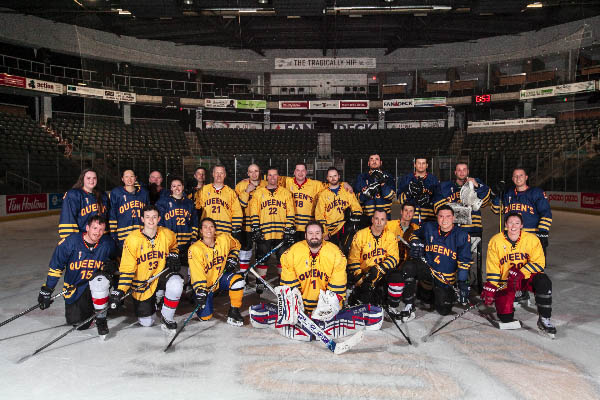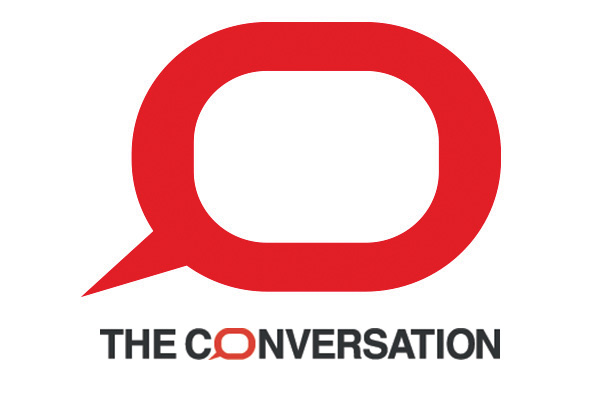Home game: Rethinking Canada through Indigenous hockey
June 5, 2019
Share

“Damn, we got it. We won one in their barn!”
To Cree hockey player Eugene Arcand, these words made little sense. You see, in the 11 years he had skated for two Saskatchewan Indian residential schools — as sweater number 14, residential school number 781 — no settler teams had ever visited the dilapitated outdoor rinks at St. Michael’s residential school in Duck Lake or the Qu'Appelle school in Lebret.
 It wasn’t until he was 23, when Arcand became the only Indigenous player in the region’s Intermediate AAA hockey league, that he learned from settler teammates that “home ice” is supposed to be “an advantage.”
It wasn’t until he was 23, when Arcand became the only Indigenous player in the region’s Intermediate AAA hockey league, that he learned from settler teammates that “home ice” is supposed to be “an advantage.”
We — Mike Auksi (Anishinaabe/Estonian) and Sam McKegney (white settler of Irish/German descent) — are researchers with the Indigenous Hockey Research Network (IHRN). We interviewed Arcand in Kingston, as part of our network’s preliminary work to cultivate critical understandings of hockey’s role in relations between Indigenous and non-Indigenous peoples in Canada.
Arcand, whose Cree/nēhiýawēwin name is aski kananumohwatah and whose treaty number is 380, knows what it’s like to be denied the right to play in a “home barn” in his traditional territory of Treaty 6. He was a member of the Indian Residential Schools (IRC) Truth and Reconciliation survivor committee and has been honoured for his work in support of Indigenous sport in Saskatchewan and across the country.
As such, he understands hockey as a site of prejudice, but also as a site rife with potential for positive change.
‘We didn’t ever get to socialize’
Regimentation, discipline and control were at the core of residential school design, as a means of conditioning Indigenous children to shed their cultural values. Physical education was well suited to this enterprise, say Indigenous studies scholar Braden Te Hiwi of the University of British Columbia and sport historian and sociologist Janice Forsyth of Western University, also an IHRN researcher.
Exactly how sport curricula was used varied over time and territory, as well as along gender lines, during more than 100 years of residential schooling in Canada.
Where they were present, sports like hockey were built into the institutions’s social engineering regime as what University of Ottawa health researcher Michael Robidoux calls a “disciplining device.”
Yet, the experiences of Indigenous players were not confined by institutional objectives or the goals of individual overseers. Forsyth and historian Evan Habkirk, also of Western University, argue that sports helped many students “make it through residential school” by being a forum in which they could develop “a sense of identity, accomplishment and pride,” even in the context of trauma and abuse.
As Cree residential school survivor Philip Michel explained in a talk he gave at Opaskwayak Cree Nation:
“We were told we were no good in residential school. But in hockey, we were good. We were just as good as anybody. In many cases, we were better.”
Arcand recalled his teammates showcasing their skill against settler teams at tournaments. However, their experiences differed dramatically from those of the non-Indigenous kids:
“We’d put all our equipment on at the school and get on the bus and we’d go to whatever town… and we’d play sometimes three games in one day. After each game, we’d get back on the bus… We didn’t ever get to socialize against our opponents.”
Years later, Arcand asked a former supervisor from the residential school, “‘Why would you make us wear our equipment all day like that? Other kids got to undress. Other kids got to run around the rink. And we didn’t. We had to wear our same stinky equipment all day long.’” The supervisor replied, “‘So you wouldn’t run away.’”
Project to assimilate
In an 1887 memorandum to cabinet, John A. Macdonald, prime minister and minister of Indian Affairs, identified the “great aim” of the Indian Act legislation as being to “assimilate the Indian people in all respects with the other inhabitants of the Dominion.”
Contradictions, however, persisted at the heart of this legislation. When residential schools were at their peak, policies like The Pass System on the Prairies actively prevented Indigenous people from integrating into settler society. While residential schooling was ostensibly about absorption, contemporary policies enacted barriers to inclusion by restricting mobility.
In Arcand’s team’s segregation from the settler teams, we see a similar contradiction at play. Residential schools were intended to condition Indigenous youth to self-identify not as Indigenous but as Canadian — with hockey functioning as a marker of such identification.
Yet the Indigenous players at the tournament were treated as second-class citizens, forbidden from fraternizing with the other players.
The government’s political goal of eliminating Indigenous rights and identities was never accompanied by a similar commitment toward eliminating settler perceptions of Indigenous inferiority.
Assimilation, in Canada, has never meant equality.
Calls to action in sport
Another factor complicating Indigenous experiences of hockey is the way the sport is romanticized in this country.
The IHRN’s early research suggests that hockey is linked to the naturalization of settler entitlement. Hockey belongs to Canadians because it belongs in the Canadian landscape, so the story goes. Thus, participation in the game allows settlers to imagine they belong here too — with adverse implications for Indigenous people.
Arcand remembers the ferocious nature of anti-Indigenous racism in Saskatchewan hockey in the 1970s. So much so, he shares, that when his team’s trainers packed up the sticks after a road game, they’d leave his out for safety.
“I had to use my stick to defend myself in those arenas.”
Anti-Indigenous racism persists in Canadian hockey today. In the past year, the First Nation Elites Bantam AAA team faced taunts of “savages” from spectators, players and coaches at the Coupe Challenge tournament in Québec. Five First Nations teams from Manitoba found themselves without a league to play in when the non-Indigenous teams against which they used to play formed a new league from which they were excluded.
Yet teams, coaches, players and fans are not without the artillery to make positive change. The Final Report of the TRC provides guidance via Calls to Action 87 to 90 on Sport and Reconciliation.
The report calls for government-sponsored athlete development, culturally relevant programming for coaches, trainers and officials, as well as anti-racism awareness training.
Arcand has worked much of his life to eliminate barriers to participation in sport for Indigenous, racialized and economically challenged athletes. To truly foster inclusion, he says, hockey associations need to confront racism and settler entitlement through disciplinary actions with sufficient teeth to create conditions of safety.
“Why are the people in power,” he asks, “not stepping up to properly enforce excluding these people who deserve to be excluded from the sport?”
‘We still need the game’
Between 1975 and 1981, long before Colin Kaepernick’s and other football players’ celebrated acts of protest, Arcand refused to stand for the Canadian national anthem. When told to do so during a playoff game, he responded, “‘Coach, you want me to stand up? I’m going to get up and you’ll never see me again. Your choice. Make it right now.’” The coach never bothered him again.
Years later, when the horrors of residential school were coming to light through the TRC, one of Arcand’s settler teammates from those days embraced him at the International Ice Hockey Federation World U20 Hockey Tournament in Saskatchewan. He told Arcand, “Now we understand.”
Arcand, a target of brutal assimilation policies and racist violence, says:
“Sports saved my life, hockey saved my life.”
Provided Canadians reckon with hockey’s relationship to settler colonialism and racism, Arcand insists, “We still need the game.”![]()
____________________________________________________________________
Sam McKegney is an associate professor of English Language and Literature at Queen's University, and Michael Auksi is an Indigenous research officer at University of Toronto
This article is republished from The Conversation under a Creative Commons license. Read the original article.
The Conversation is seeking new academic contributors. Researchers wishing to write articles should contact Melinda Knox, Associate Director, Research Profile and Initiatives, at knoxm@queensu.ca.